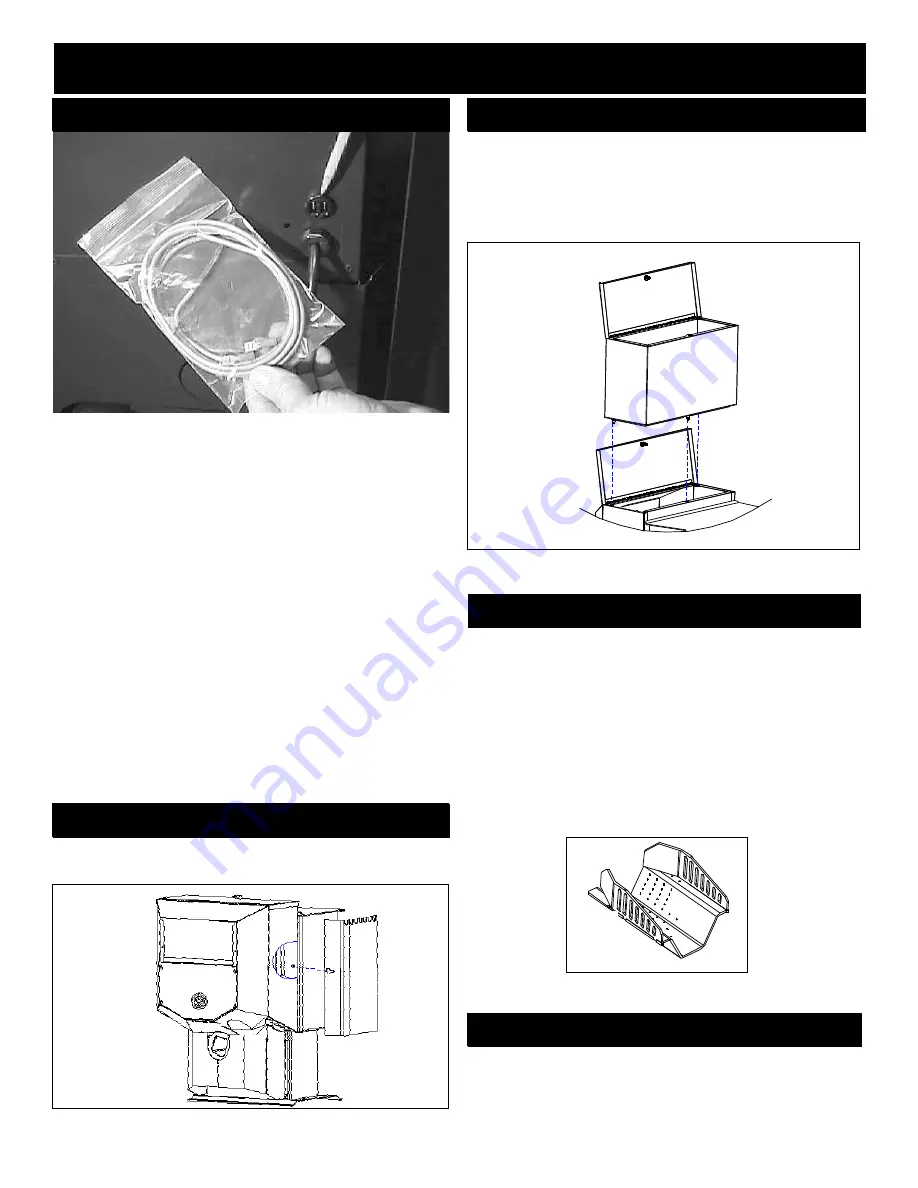
25
PC 45 Corn/Pellet Stove
OPTIONS
Hopper Extension
The hopper extension allows you to put more
pellet fuel in the hopper and extends burn time on one
load of corn. The hopper extension adds 65 pounds to
the existing 80 pound hopper capacity, allowing you to
load 145 pounds of corn at one time. See Fig. 46.
Fig. 46
Optional Hopper Screen (Corn Strainer)
The hopper screen/corn strainer was designed
to sift the corn before it is fed into the burn pot. This
sifting will catch unwanted materials from being burned.
The room sensor is a small temperature sensor
on the end of a 60" gray wire. This sensor is installed
much like a standard wall thermostat. Because it is so
small, it can be hidden along the trim of a doorway or
even up the leg of a coffee table. There is a remote
room sensor port on the rear of the unit for easy exter-
nal connection. Use standard 18-2 thermostat wire to
extend the distance to the desired location (100' maxi-
mum). The room sensor should be installed in the loca-
tion where you want to control the temperature.
NOTE: Distances of more than 25 feet from the
unit or in another room are not recommended. The room
sensor is essential for the Accentra's excellent efficiency.
It is recommended that the room sensor be
installed,
even if only installed on the rear of the unit as
a return air sensor. There is an intake screen on the
bottom of the rear sheetmetal enclosure. This is an ideal
place to tyrap the sensor head to sense return air tem-
perature.
Room Sensor Installation
Fig. 47: Optional Pellet Burnpot Grate
Optional Pellet Burnpot Grate
The pellet burnpot grate is required to burn
pellet fuel.
The corn burnpot and pellet burnpot grates were
designed to be interchangeable, and are easily installed
and removed without the use of tools.
Each PC 45 comes with (2) corn burnpot grates
to aid in continual burning of corn in the event that the
corn burnpot needs to be cleaned. Please note
they
are both corn burnpot
grates, not one corn grate and
one pellet grate.
Side Heat Shields
Side heat shields are available to reduce the
clearance to combustible materials. See Fig. 45.
Fig. 45
Fig. 44




































